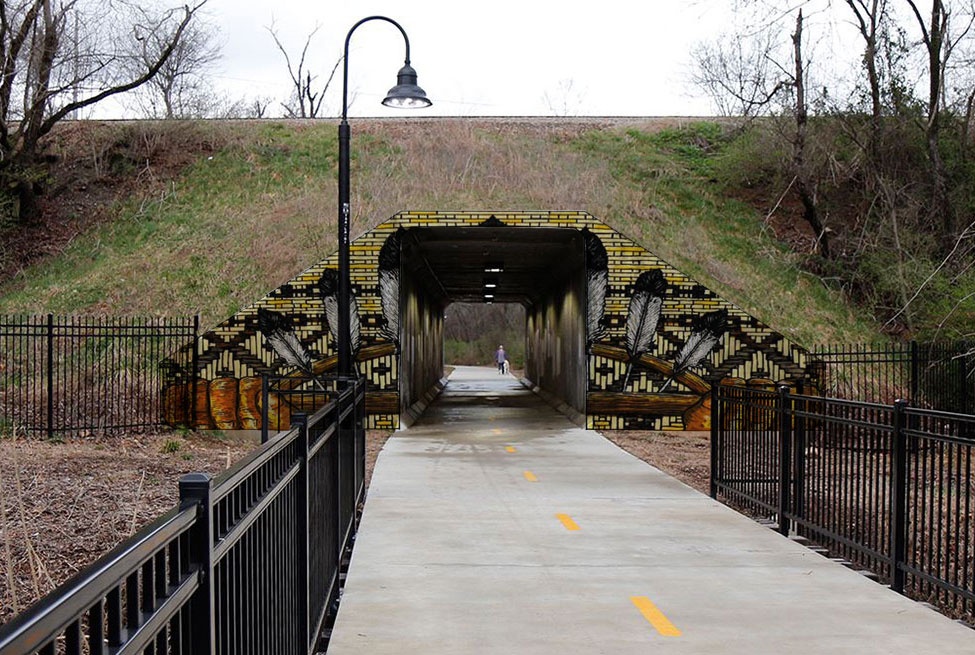
Staff overly of renderings to show what a new mural could look like along the Tsa La Gi Trail in south Fayetteville
Fayetteville City Council members next week will consider a proposal for new public art on the city’s trail system.
City officials earlier this year asked area artists to submit proposals for a new mural along Tsa La Gi Trail that depicts the journey of the Cherokee people along the Trail of Tears.
The multi-use trail was opened in 2014, and runs parallel to Martin Luther King Jr. Boulevard. It is named in remembrance of the forced relocation route where a group of Cherokee in 1839 formed a detachment camp near what is currently the intersection of MLK and Stadium Drive.
A portion of the trail runs through a tunnel underneath the Arkansas Missouri Railroad rail line. City staff identified the exterior wing walls on the east side of the tunnel as an ideal place for a mural that they hoped would fulfill the requirements of a state appropriation the city received for improvements to Trail of Tears sites in Washington County.
Paul Becker, the city’s finance director, said it was eventually determined that the mural project did not qualify for the state grant. Becker, however, said city staff and members of the Fayetteville Arts Council – who juried the mural proposals – still wanted to continue with the project.
“We had gone so far with the selection process…we wanted to do something to commemorate the Trail of Tears anyway,” Becker said.
Aldermen on Tuesday will consider spending $5,000 on the project, which includes a contract with Fort Smith artist Stacy Bates for her design, titled “Holding On and Letting Go: The Struggles and Strength of the Tsa La Gi.”
In a statement provided to city staff, Bates said the artwork is focused on the culture, traditions and strength of the Cherokee people.
The design includes a Cherokee’s hands grasping onto an eagle feather wand. Behind the wand is a detailed rivercane basket weaving pattern.
“The golden eagle tail feathers used in making the feather wand are extremely revered and sacred to the Cherokee,” Bates wrote, adding that when combined with sticks, the Cherokee built wands to use during special events like the eagle dance. “The eagle dance is one of the most important dances in Cherokee culture and is the welcoming of the eagle spirit along with the celebration of killing an eagle.”
Bates said she chose the image because she felt it represents the Cherokee desperately holding onto their important traditions and strength while being forced away from their homeland.
According to city documents, the Fayetteville Parks and Recreation Department will power wash the tunnel walls before the mural is painted, and then apply an overcoat to protect the artwork once it’s complete. The department has also agreed to remove graffiti and other damage to the mural for at least five years.


